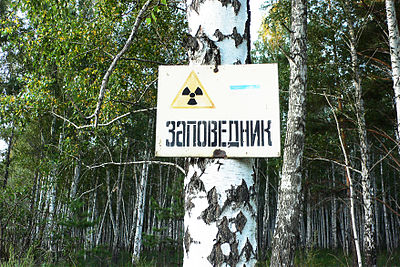free
Country:
Region:
Other names:
Value:
Visit duration:
Price (adult):
free
Why Top:
Заповедная территория, созданная для изучения последствий радиационного загрязнения.
Description:
It was created to protect the population from radiation and to study the effects of radiation on living organisms and the environment in natural conditions. It is located in the forest-steppe zone on the territory of the Kasli and Kunashak districts of the Chelyabinsk region, its area is 16,616 hectares.
There are only two such reserves in the world — the East Ural Reserve in our country and the Polessky Reserve in Belarus. In both cases, they arose as a result of the largest radiation disasters — the Chernobyl accident on April 26, 1986 and the explosion at the Mayak plant on September 29, 1957.
In 1957, the largest radiation accident in the Urals occurred at the Mayak plant, comparable in scale to Chernobyl (20 million Curies were released here, and 50 million Curies were released in Chernobyl). As a result of the explosion of a 300 cubic meter tank, a huge release of radiation occurred. A vast Eastern Ural Radioactive Trace (EURT) was formed, approximately 300 kilometers long and about 10 kilometers wide. It contaminated not only the territory of the Chelyabinsk region with radiation, but also affected the Sverdlovsk and Tyumen regions. At the same time, the culprit of the accident — the current city of Ozersk — was not affected.
The radioactive accident was strictly classified for many decades. In the West, many more people knew about it than in the USSR. Only in 1989, the authorities released information about the catastrophe that occurred in 1957.
Thousands of people suffered from radiation. 23 settlements disappeared forever from the map of the Urals. Only one or two weeks after the accident, unsuspecting people from the most contaminated villages began to be resettled to other places. Domestic animals were destroyed and buried, buildings were destroyed.
Tens of thousands of liquidators of the “Kyshtym accident” suffered from radiation.
It was created to prevent the removal of radioactive substances from the contaminated territory, to prevent the penetration of the population here, and also to study the effects of radionuclides in natural conditions. Until now, due to high radiation, scientists classify 85% of the reserve’s territory as an ecological disaster zone. Ecologists and biologists carefully study the effects of radiation on living organisms and the environment in natural conditions. As it turned out, representatives of wildlife gradually adapted to high radiation.
The Techa and Karabolka rivers flow through the reserve, there are two lakes: Berdenish and Uruskul. Also adjacent to the reserve territory are lakes Alabuga, Kozhakul, Maloe Travyanoe, Malye and Bolshiye Kirpichiki. Many waterfowl are found on the lakes. At the same time, a lot of radioactive sludge has accumulated at the bottom of the lakes.
This territory is characterized by forest-steppe vegetation: birch forests alternate with steppes. Sometimes there are pine trees. Natural vegetation has been restored on the formerly plowed fields. The trees that died after the accident have already been restored. There are 455 species of higher plants in the reserve, including some species listed in the Red Book. It is curious that rare plants have become 5–10 times more common than before the zone was closed to visitors.
The protected nature of the territory, despite the high level of radiation, has had a beneficial effect on the animal world. They do not even know that there is a lot of radiation here. The vertebrate fauna is represented by 283 species, including 47 species of mammals, 213 species of birds, 15 species of fish, 4 species of reptiles, 4 species of amphibians. There is a high concentration of rare animal species in the protected area.
There is a large population of grey geese, and mute swans, common cranes, grey herons, ducks, and seagulls also nest here. There are 24 species of sandpipers. Here you can also meet the golden eagle, white-tailed eagle, saker falcon, peregrine falcon, osprey, black-headed gull, and Dalmatian pelican, all listed in the Red Book. You can also see such a beautiful bird as the eagle owl. The black-throated loon nests on Lake M. Kirpichiki and reservoir No. 11. The red-necked grebe is occasionally encountered. Sometimes even Dalmatian pelicans are seen here, but there is no information about their nesting.
Mammals are quite common for these areas (but there are significantly more of them than in unprotected areas). Of the larger animals, you can meet elk, lynx, fox, roe deer, wild boar, hare, etc.
Until 1991, the reserve was under the jurisdiction of the Experimental Research Station (ONIS) of the Mayak Production Association. After its liquidation, the reserve actually began to exist only formally. Due to previous secrecy requirements, the reserve was not included in the State Cadastre of Protected Natural Areas. However, it is not possible to enter the territory of the radioactive reserve. It is actively patrolled by the nuclear security. All violators are detained and fined.
Categories:
Topics:
Why visit:
Interesting:
Fitness level:
Best visit time:
Access:
Roads:
Info:
Clothing:
for the season
Connection:
No
- Around Baikal by Car: A Grand Loop of Siberia’s Inland Sea
- Where tourists are kidnapped for ransom
- Dagestan: between the grandeur of nature and the challenges of tourism
- The Louvre welcomes Renaissance masterpieces from Naples Capodimonte Museum
- Luo
- Liechtenstein
- Tasmania
- Unadsdalur Church
- Leonardo DiCaprio: tourist places of his life and filming
- Visible from the Moon: Earth’s Most Monumental Wonders
- Sydney
- Greenland
- Kubachi (Dagestan, Russia)
- Travel to Cambodia
- History, discovery and scientific significance of the McMurdo Dry Valleys
- Finland
- North Coast 500: a grand loop of Scotland’s Northern Highlands
- From a Scientific Point of View: The Grand Canyon
- Tourism crime in Amsterdam: how to avoid becoming a victim
- And in Africa the mountains are this high











